| |
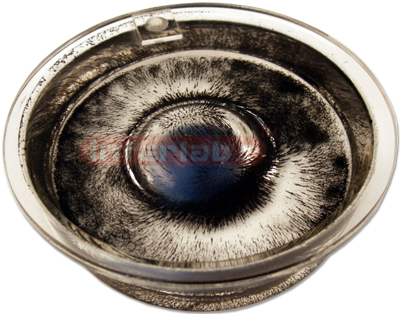 Click to Enlarge
Click to Enlarge
|
Trippensee Magnetic Earth Model (LSE)
This is a great demonstration of the earth's magnetic field. Use it as is, or place it on an overhead projector to show the whole class. Iron filings are suspended in oil to allow the included magnet to align them to its field.
See Enlarge
|
|
|
|
 Click to Enlarge
Click to Enlarge
|
Earth Globe Ornament (LSE)
| Holiday Special! Display the Planet Earth; turn your tree into a planetarium. |
| |
| Give the world this Christmas with our holiday globe ornament. This little plastic globe displays the world at a 1 : 150,000,000 scale! The complete modern world is portrayed on a 3.5 inch hanging ornament. This planet earth features labels of country names, latitudinal lines, longitudinal lines, continents, oceans, and more. The features are set against a blue backdrop to increase clarity. |
| Order yours while quantities last. |
See Enlarge
|
|
|
|
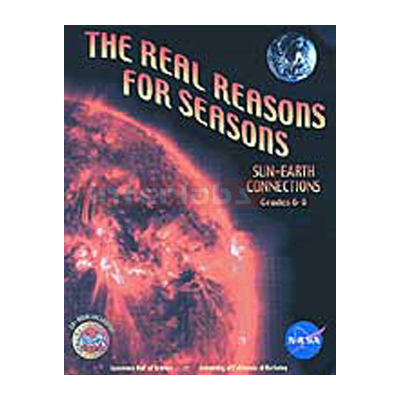 Click to Enlarge
Click to Enlarge
|
The Real Reasons for the Seasons (LSE)
The Real Reasons for Seasons: Sun?Earth Connections Students arrive at a clear understanding of seasons as they investigate the connections between the Sun and Earth. They gain important standards-based science and math content and develop scientific investigation skills. Includes a CD-ROM. For grades 6-8.
See Enlarge
|
|
|
|
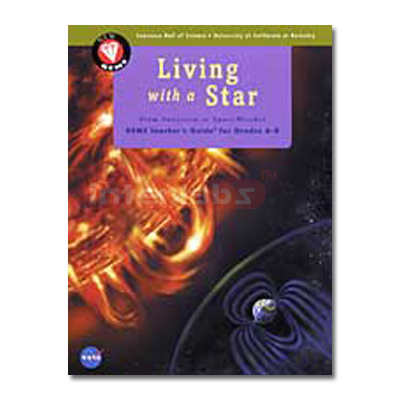 Click to Enlarge
Click to Enlarge
|
Living with a STAR (LSE)
Living with a Star: From Sunscreen to Space Weather. GEMS Teacher's Guide, Grades 6-8 Students unveil our dynamic relationship with the Sun through a space-weather mystery, a mock mission from Earth's atmosphere to outer space, ultraviolet experiments, and more. This NASA-inspired unit focuses on the impact of electromagnetic energy and solar particles on Earth. CD-ROM included. For grades 6-8.
See Enlarge
|
|
|
|
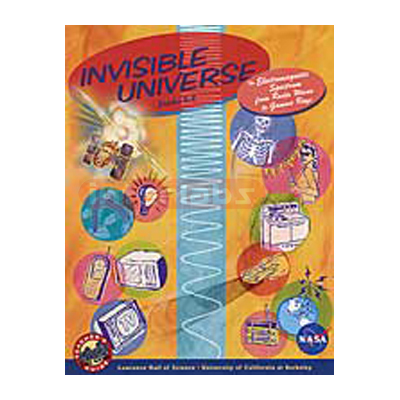 Click to Enlarge
Click to Enlarge
|
Invisible Universe (LSE)
Invisible Universe: The Electromagnetic Spectrum from Radio Waves to Gamma Rays. GEMS Teacher's Guide, Grades 6-8 Students unveil our dynamic relationship with the Sun through a space-weather mystery, a mock mission from Earth's atmosphere to outer space, ultraviolet experiments, and more. This NASA-inspired unit focuses on the impact of electromagnetic energy and solar particles on Earth. CD-ROM included. For grades 6-8.
See Enlarge
|
|
|
|
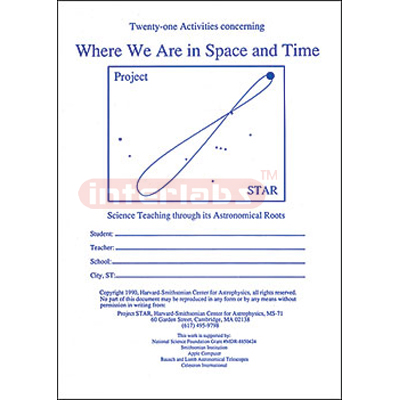 Click to Enlarge
Click to Enlarge
|
Where We Are in Space and Time; Activity Book (LSE)
Activity Book: Where We Are in Space and Time Twenty-one hands-on activities are included in this 176-page spiral-bound book. Students can write answers or do calculations right in the book. Some pages can be cut out. Each activity has a list of required materials, most of which are available in this catalog. Includes a glossary and a key to identifying objects on the photographic plates. The activities are divided into 3 units: |
| |
Observing and Measuring Astronomical Time
Measuring Astronomical Distances using Triangles
Measuring Astronomical Distances using Apparent Brightness |
| |
| This 48-page addendum to Where We Are in Space and Time, gives answers to the homework questions and problems, and offers suggestions on how to approach each activity. Black and white prints are included to be used as masters. |
See Enlarge
|
|
|
|
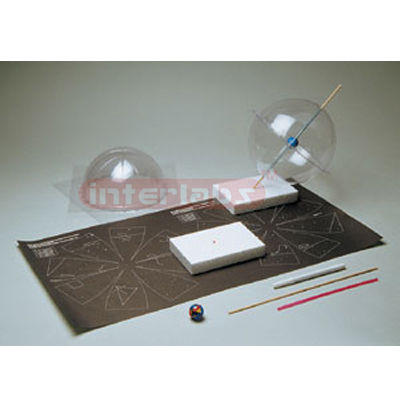 Click to Enlarge
Click to Enlarge
|
Celestial Sphere Kits (LSE)
| Recommended for astronomy and earth science at the junior high school through college level. Celestial Sphere Kit With the celestial sphere, students are able to model the apparent daily motions of the stars and the sun for a variety of latitudes and for any day of the year. The activity includes data that the students can use to see that the seasons are not caused by the distance between the earth and the sun. The activities and sphere will help with using the sky for navigation and explaining the cause of seasons on the earth. They can experiment with the sky in the laboratory and at home. The kit includes (10 of each unless noted): 20 clear plastic hemispheres |
• star charts with the 500 brightest stars for north and south hemispheres
• pens to mark stars on the inside surface of each hemisphere
• earth space globes (1-inch diameter)
• pins to represent the sun
• Styrofoam bases
• wooden dowels for the axis
• plastic straws for support
• 1 set of instructions & activities. |
See Enlarge
|
|
|
|
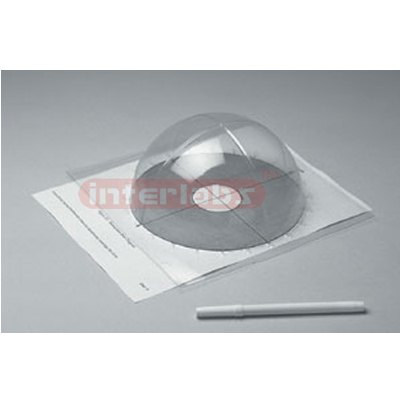 Click to Enlarge
Click to Enlarge
|
Sun Tracking Plastic Hemisphere Kit (LSE)
| Sun Tracking Plastic Hemisphere Kit Many students believe that the sun is at zenith at noon for every day of the year. By making this model, they will learn the true daily path of the sun. Repeating the same thing one month later, they will compare the daily paths of the sun for different seasons of the year and be active participants in long-duration observations. The kit includes: 10 hemispheres (7 inch diameter) |
• 1 pen
• 1 set of instructions & activities. |
See Enlarge
|
|
|
|
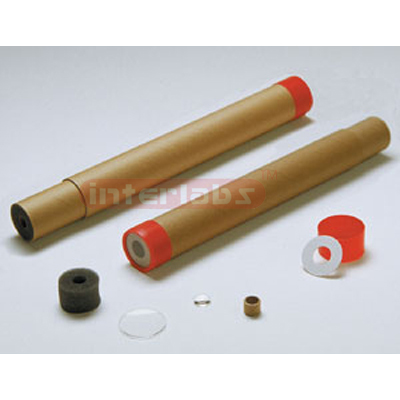 Click to Enlarge
Click to Enlarge
|
Refracting Telescope Kit (LSE)
| Refracting Telescope Kit Experiment with each element of a simple 16-power refracting telescope and see how the lenses work when put together without using an optical bench. Galileo’s first telescopes lacked precision and clarity. Nevertheless, he made astonishing discoveries with his crude instruments. This simple lab enables students to build a telescope that is similar to Galileo’s. Use the telescope and see how it is similar to a pinhole camera |
• view inverted astronomical images
• estimate the magnification power
• find the focal length of a lens
• see how the moon looked to Galileo. The Kit includes (10 of each unless noted): inner and outer tubes
• plastic lenses (43mm diameter, objective, 400mm focal length)
• plastic lenses (17.5mm diameter, 25mm focal length)
• foam holders, cardboard spacers and washers for the eyepiece lenses
• red plastic caps
• 1 set of instructions & activities. |
See Enlarge
|
|
|
|
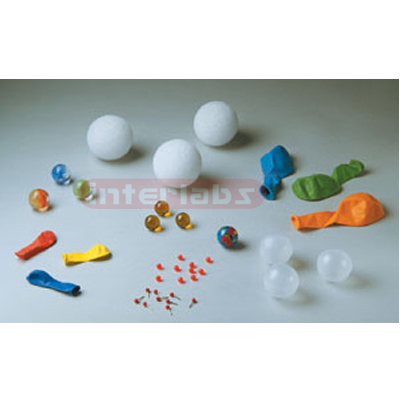 Click to Enlarge
Click to Enlarge
|
Solar System Scale Model Kit (LSE)
| Now your students can hold the solar system in their hands and get a real sense of how far away the planets are and how big they are in relation to one another. Using multiple combinations of these spheres, students can simulate the relationship of the planets to the sun, the moon to the planets, and planets to planets. One to four students can work simultaneously using different combinations of spheres with one lab. The kit includes: 10 marbles and balloons (small and large), beads, Styrofoam balls |
• 3 plastic spheres
• map pins
• 1 earth globe
• physical data about the planets and moons
• 1 set of instructions & activities |
See Enlarge
|
|
|
|
 Click to Enlarge
Click to Enlarge
|
3-D Constellation Kit (LSE)
| 3-D Constellation Kit Explore the stars of the Big Dipper and Orion! These photographic plates — six different views of the celestial sphere — were taken with a telescope that has a focal length of 22 inches so they should be viewed from 22 inches away to appear the same size as they look in the sky. Fluorescent orange beads are strung to the plates at their proper distance to simulate the stars, demonstrating to students that not all of the stars in a constellation are the same distance from earth. Constellations include Orion, Ursa Major, Taurus, Cassiopeia, Gemini, and Sagittarius. One to six students can simultaneously complete one portion of the sky (each using one plate). The kit includes: 250 beads (1/8") |
• 1 spool of black thread
• 6 photo plates of constellations
• 10 washers
• 1 set of instructions & activities. |
See Enlarge
|
|
|
|
 Click to Enlarge
Click to Enlarge
|
Light Measurement and Stellar Distance Kit (LSE)
| Light Measurement and Stellar Distance Kit Your students can now determine the luminosity of the sun using a 200-watt light bulb. They can explore the relationship between the apparent brightness of a luminous object and the distance to the object. Using a null photometer constructed from paraffin and aluminum foil, a student can compare two light sources to determine the luminosity of — or the distance to — one of the sources. The photometer is then used to compare a 200-watt light bulb with the sun to estimate the sun’s luminosity. The kit also contains a 1-foot length of .01-inch optical fiber that, when taped to a flashlight, becomes an "artificial star." With an output of one-millionth of a watt, this small source of light is compared to a star in the sky and the distance to the star can be estimated. |
| |
The kit contains: 10 paraffin blocks
• 10 foot-long pieces of optical fiber
• 1 200-watt lamp
• 1 lampholder
• 20 rubber bands
• 1 flashlight with batteries
• 1 25’ roll of aluminium foil
• 1 set of instructions & activities. |
See Enlarge
|
|
|
|
 Click to Enlarge
Click to Enlarge
|
Holographic Diffraction Gratings (LSE)
Holographic Diffraction Grating This specially developed, high-efficiency diffraction grating is 100 times more efficient than acetate gratings. It can produce a spectrum bright enough for vivid classroom discussions even in rooms that do not darken. The shape of the grating surface produces a dispersion angle of 23.5 degrees and a groove separation of 19,050 lines per inch (750 lines per mm) for a wavelength of 550 nm. The sinusoidal shape of the grating surface places most of the light in the first order image. This shape is embossed in a polyester plastic. It can be used to make a spectrometer, a spectrum projector, or used with an overhead projector to produce a projected spectrum for demonstration purposes. Some of the gratings come with four color filters: blue, red, green, and yellow. Used singly and in combination, you can demonstrate how light is affected by color filters, or how objects of a certain color appear when bathed in light of another color.
See Enlarge
|
|
|
|
 Click to Enlarge
Click to Enlarge
|
Project STAR Teacher's Sampler (LSE)
| Project STAR Teacher’s Sampler If you have never seen any of these materials and are curious about them, this sampler of Project STAR materials and activities was created for you. The sampler includes (one of each): Do-It-Yourself Star Finder Kit |
• Celestial Sphere Kit
• Sun Tracking Hemisphere Kit
• 3-D Constellation Kit
• Spectrometer Kit (cardboard or plastic)
• Refracting Telescope Kit (with tubes)
• Light Measurement and Stellar Distance Kit
• Holographic Diffraction Grating — mounted, 35mm glass slide
• Where We Are in Space and Time Activity Book. |
See Enlarge
|
|
|
|
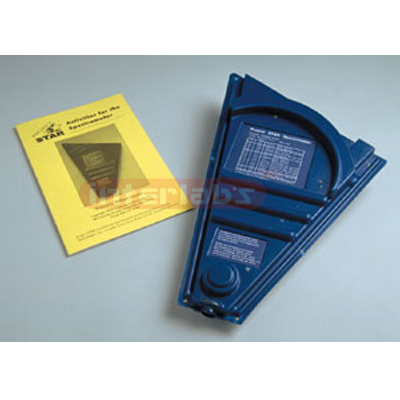 Click to Enlarge
Click to Enlarge
|
Plastic Spectrometer (LSE)
| Plastic Spectrometer Hailed as "one of the very best, affordable scientific instruments" by the Astronomical Society Pacific, the Project STAR spectrometer is made of high-impact plastic for years of classroom service and comes completely assembled. The spectrometer uses high-dispersion, high-efficiency diffraction grating that produces an easily-read bright spectrum. Includes a reference label for bright spectral lines and a scale labeled in both electron volts and nanometers for chemistry and physics instruction. Also includes a 10-page activity booklet. The activities include: Observing what diffraction grating does |
• identifying various light sources
• identifying elements in flame spectra, solar spectra and street lights including mercury, sodium, hydrogen and neon. |
See Enlarge
|
|
|
|







